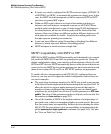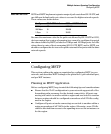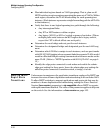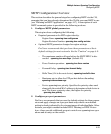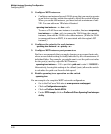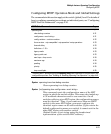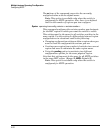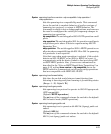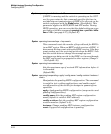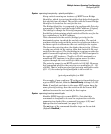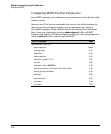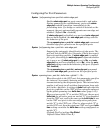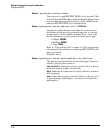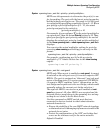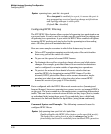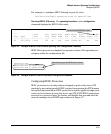
Multiple Instance Spanning-Tree Operation
Configuring MSTP
Syntax: spanning-tree hello-time < 1..10 >
If MSTP is running and the switch is operating as the CIST
root for your network, this command specifies the time in
seconds between transmissions of BPDUs for all ports on the
switch configured with the Global option. (the default). This
parameter applies in MSTP, RSTP and STP modes. During
MSTP operation, you can override this global setting on a per-
port basis with this command: spanning-tree < port-list > hello-
time < 1..10 > (see page 4-27). (Default: 2.)
Syntax: spanning-tree max-hops < hop-count >
This command resets the number of hops allowed for BPDUs
in an MST region. When an MSTP switch receives a BPDU, it
decrements the hop-count setting the BPDU carries. If the hop-
count reaches zero, the receiving switch drops the BPDU. Note
that the switch does not change the message-age and
maximum-age data carried in the BPDU as it moves through
the MST region and is propagated to other regions. (Range: 1
- 40; Default: 20)
Syntax: spanning-tree maximum age
Sets the maximum age of received STP information before it
is discarded.
(Default: 20.)
Syntax: spanning-tree pending < apply | config-name | config-revision | instance |
reset >
Manipulates the pending MSTP configuration. The command
is useful in test or debug applications, and enables rapid
reconfiguration of the switch for changes in spanning-tree
operation.
apply: Apply pending MSTP configuration (swaps active and
pending configurations).
config-name: Sets the pending MST region configuration
name (default is switch's MAC address).
config-revision: Sets the pending MST region configuration
revision number (default is 0).
instance: Change pending MST instance configuration.
reset: Copy active configuration to pending.
4-24



